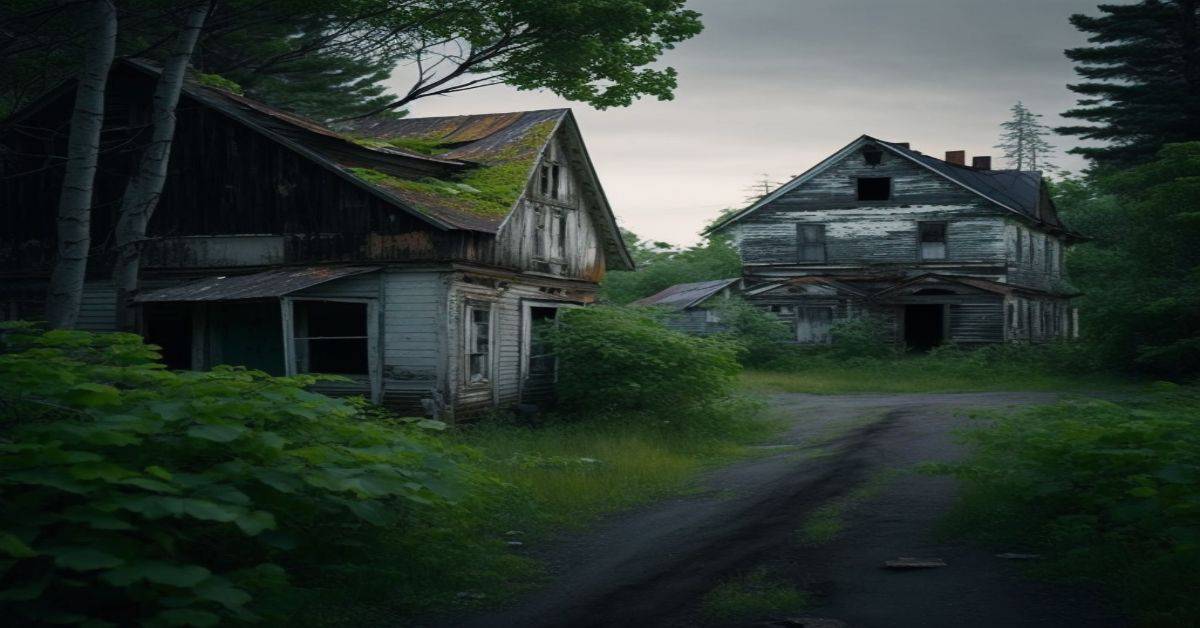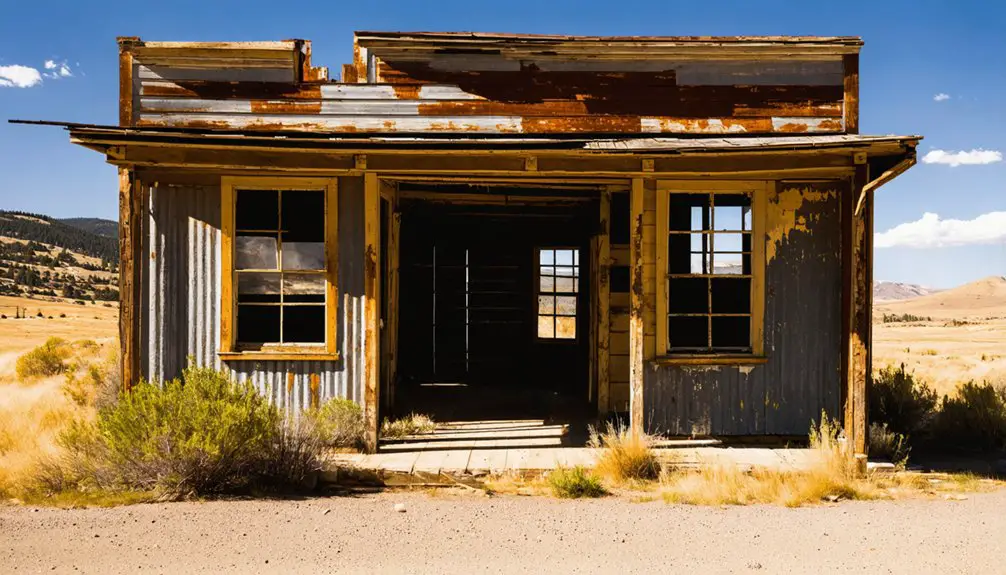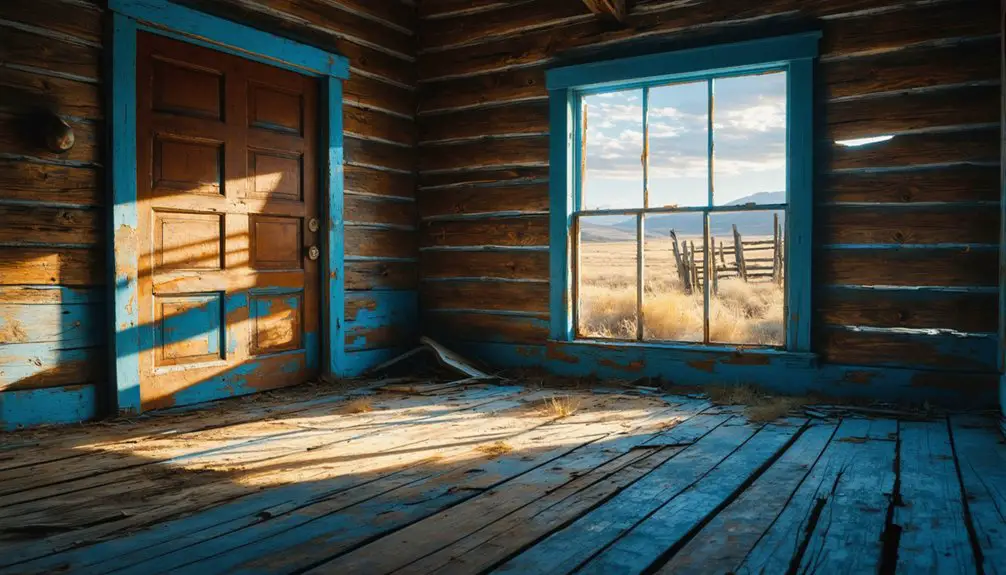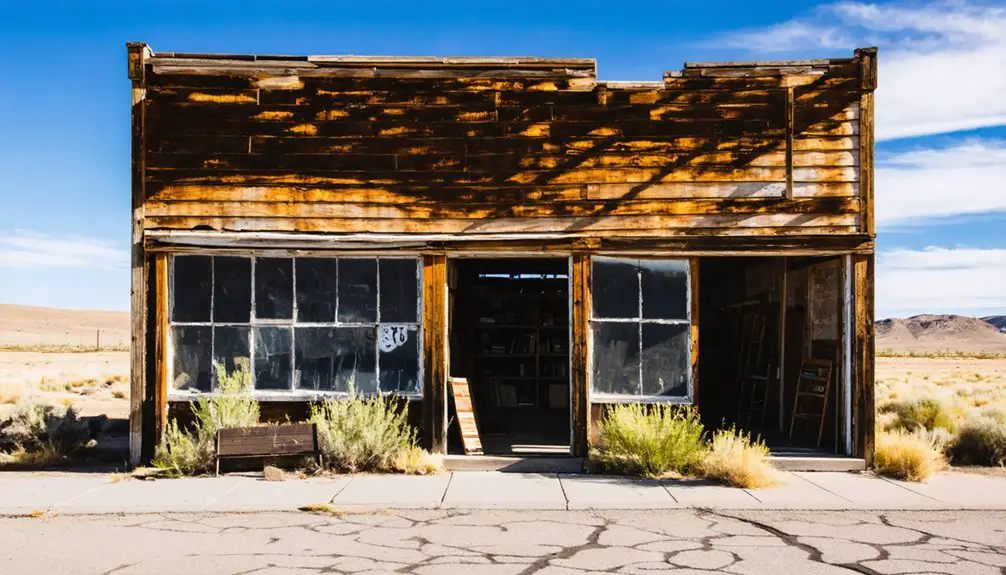The Union admitted Oregon in 1859, making it the 33rd state. One of Oregon’s primary bordering states is Washington to the north. Oregon is blessed to share the waters of the Columbia River with Washington. According to the 2021 census, Oregon has a population of 4.27 million.
There are around 139 ghost towns in Oregon. The area was excellent for lumber, fishing, and agriculture communities.
As the lumber industry saw considerable success in Oregon, many of its towns, camps, and settlements were deserted as forests were cleared and logging policies changed with the times.
The area is still well-known for its agricultural feats and the coastal fishing industry, but natural forces and lack of funding caused some towns to fall apart early in their years.
Whitney, Oregon
Whitney was founded in 1900 and is part of Baker County. Named after C.H. Whitney, one of the founding pioneers in Oregon, the town began as a lumber community. In addition to this industry, Whitney had the central station of the Sumpter Valley Railway narrow gauge railroad.
The Oregon Lumber Company built the town’s first sawmill. This sawmill burned in 1918, which caused a severe decline in the city. The Oregon Lumber Company rebuilt it in 1939.
Whitney became a ghost town in 1940. Logging in the area fell so sharply by 1940 that it caused the city and the railroad to disappear.
To pass through Whitney, you must take Route 7 southwest from Sumpter. Whitney is in the center of three important geographical landmarks:
- The North Fork Burnt River
- The Blue Mountains
- Wallowa-Whitman National Forest
Sterlingville, Oregon
In 1854, James Sterling and Aaron Davis discovered gold in Sterling Creek. Shortly after the discovery, a mining camp was established that quickly grew into the former town of Sterlingville. Within two years of its founding, the city rose to 800 residents.
At its peak, the population reached 1,500. Businesses were thriving as general stores, boarding houses, a dance hall, a blacksmith, a casino, a bakery, a warehouse, and a barbershop offered necessities and social entertainment. A school was established in 1869.
In 1877, the Sterling Ditch was built to divert twenty-three miles of water from the Little Applegate River to the Sterling Mines, establishing the largest hydraulic mine in Oregon. A post office opened in 1879 and operated until its closure in 1883.
As the gold supply was running out in the mines, more and more of the town’s residents found other mines looking for working men. By 1910, hydraulic mining had stopped, and in 1937 the school closed.
During the years of the Great Depression, Sterlingville saw a revival as the hydraulic mine was reopened and operated from 1933 until its final closure in 1957. Operating the mines a second time wreaked havoc on the surrounding environment.
The soil had been washed away, rock piles overtook the streams, and the natural landscaping of the area had been destroyed. After the final shutdown, the town was deserted and destroyed.
Jawbone Flats, Oregon
Jawbone Flats started in 1859 when several miners discovered gold in the vicinity. However, the mining camp wasn’t officially founded as a mining town until 1931. James Hewitt of the Amalgamated Mining Company oversaw the town and mining processes that included lead, zinc, copper, silver, and gold.
When President Franklin D. Roosevelt created The New Deal in the 1930s, Jawbone took advantage of the program and started a community infrastructure project. Completing the project in 1939, the town built multiple roads and bridges, including the Gold Creek Bridge.
Eleven years after The New Deal project and significant town improvements had been completed, winter hit hard. Snowstorms in the early 1950s caused severe damage to city structures, and mining operations were no longer profitable. The town’s decline was on a steady path to desertion.
By 1992, regional mining activity had stopped. Jawbone had been abandoned. The Shiny Rock Mining Company that owned the mines and land Jawbone was part of donated over 150 acres of forest land to a non-profit historical society known as Friends of Opal Creek. The site of Jawbone was included within the gifted acreage.
The Beachie Creek Fire in 2020 tragically destroyed much of what remained of Jawbone. The townsite is in Marion County, along Opal Creek, approximately 22 miles from Salem, Oregon. The area is accessible to the public and often hosts educational trips for schools and students.
Copperfield, Oregon
Copperfield started as Copper Camp in the late 1890s. Copper ore prospectors were believed to have resided in the camp while trying to get rich. While that is a typical story with some validity, historians have uncovered evidence that the town had another purpose.
Beginning as Copper Camp, it was soon realized there was no copper. In 1898, the name was changed to Copperfield, and the land was platted along a railway that was never developed. The town served as a location to house and entertain thousands of men working on essential construction projects nearby; a bridge to cross the Snake River, tunnels for the Oxbow Dam, and the future of the Idaho Power Company later in the twentieth century.
In 1899, a post office was opened and operational. By 1910, the tunnel project added another 1,000 men to the community. Around 1913, construction jobs started to be less in demand as projects were completed or new ways of building were being tried.
With less work available, the town’s residents became aggressive and lawless. Fires destroyed blocks of businesses, and martial law was declared.
The post office closed in 1927, marking the beginning of the ghost town. Oxbow was founded near the site of Copperfield and continued with plans to construct Oxbow Dam in 1965. Now the city of Copperfield has become Copperfield Park, operated by Idaho Power.
Valsetz, Oregon
Valsetz was founded by the Cobbs & Mitchell Company in 1919 as a timber town. The community’s post office was opened the following year, in 1920.
Cobbs & Mitchell oversaw the town from 1919 until 1947. Later that year, in 1947, Herbert Templeton purchased the city and all its structures, changing business operations to Valsetz Lumber Company. In 1959, the sawmills and timber stands were sold to the Boise Cascade Corporation.
Over the next two and a half decades, the lumber town went through many changes until its end. In the 1970s, the old-growth trees used for timber production had all been removed. Due to the lack of lumber, the railroad was torn up since it was no longer utilized.
In 1983, Boise Cascade Corporation officially announced that Valsetz would cease operations the following year. By the end of 1984, the post office was closed while all the town structures, homes, and streets were removed.
The Valsetz townsite became another part of the Valsetz Tree Farm for forest regrowth. The man-made Valsetz Lake was drained in 1988, leaving the land as nature had first begun. As a tribute to what was once a thriving town, former residents gather every year near Falls City to honor the monument commemorating the town of Valsetz.
Another beautiful gift left by the town of Valsetz is the protected area called “Valley of the Giants,” where you can find a unique spruce forest.



